
The defense cyber security market is estimated to be valued at US$ 17.68 Bn in 2025 and is expected to reach US$ 46.78 Bn by 2032, growing at a compound annual growth rate (CAGR) of 14.9% from 2025 to 2032.
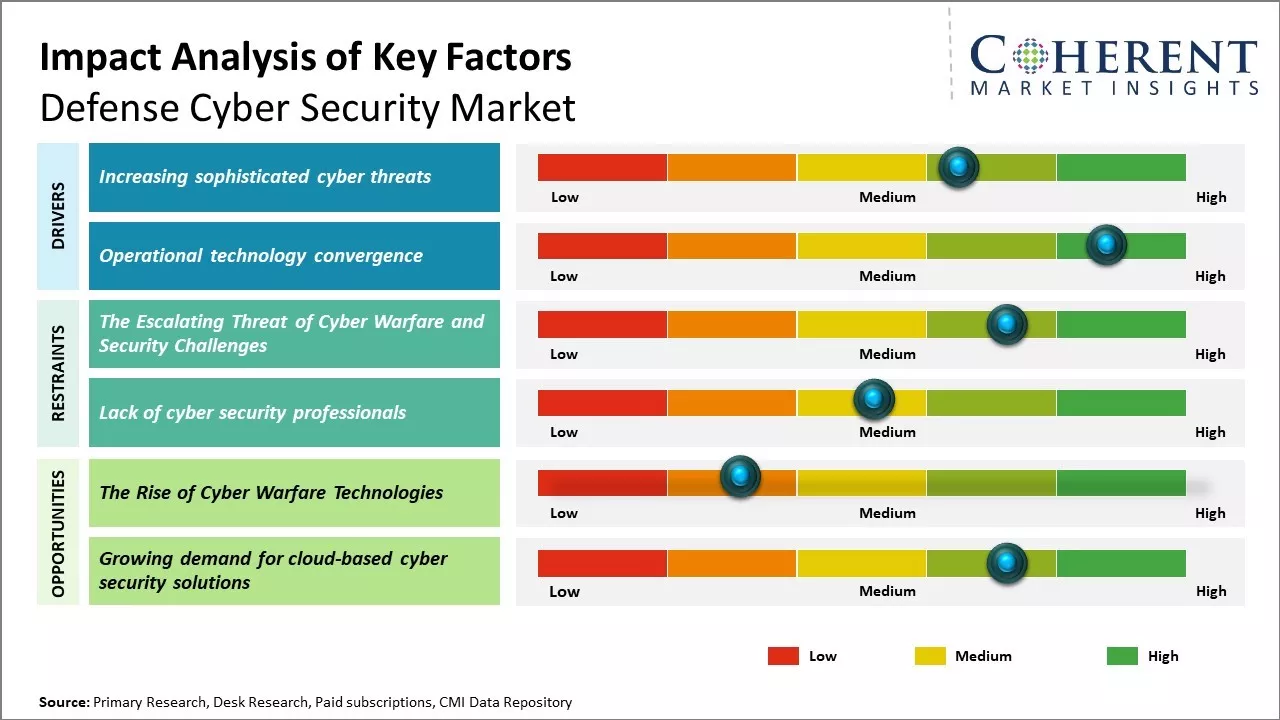
Discover market dynamics shaping the industry: Download Free Sample
The defense cyber security market is expected to witness significant growth over the forecast period. With growing sophistication of cyber threats and increasing dependency of military systems on digital technologies, countries are investing heavily in procuring advanced cyber security solutions. Moreover, the development of new technologies such as Artificial Intelligence (AI), cloud computing, and 5G networks is also driving the need for robust cyber security systems. However, budget constraints of some countries may limit the growth of the market. Nonetheless, increasing instances of cyber-attacks on critical defense infrastructure will continue to drive the demand for next-generation cyber security solutions with enhanced capabilities.
Market Drivers: Increasing sophisticated cyber threats
With the growing connectivity brought about by advanced technologies such as cloud, Internet of Things (IoT), and 5G, the attack surface for cyber threats has expanded exponentially. Nation state actors and terrorist groups are now actively targeting critical defense infrastructure to gain strategic advantages. The Stuxnet attack on Iranian nuclear facilities highlighted the vulnerability of industrial control systems. Ransomware attacks have paralyzed shipping giant Maersk and pharmaceutical major Merck. State actors are known to be developing Artificial Intelligence (AI)-powered tools to automate cyberattacks and damage critical assets with minimal human intervention. The threat landscape has evolved from stealing data to actually disrupting systems and destruction of property. Traditional perimeter based security tools are not adequately equipped to detect and prevent these advanced persistent threats. There is a pressing need for defense organizations to implement proactive threat hunting strategies using advanced analytics and automation. Next generation network access controls, endpoint detection & response, identity as well as cloud security solutions have become critical priorities.
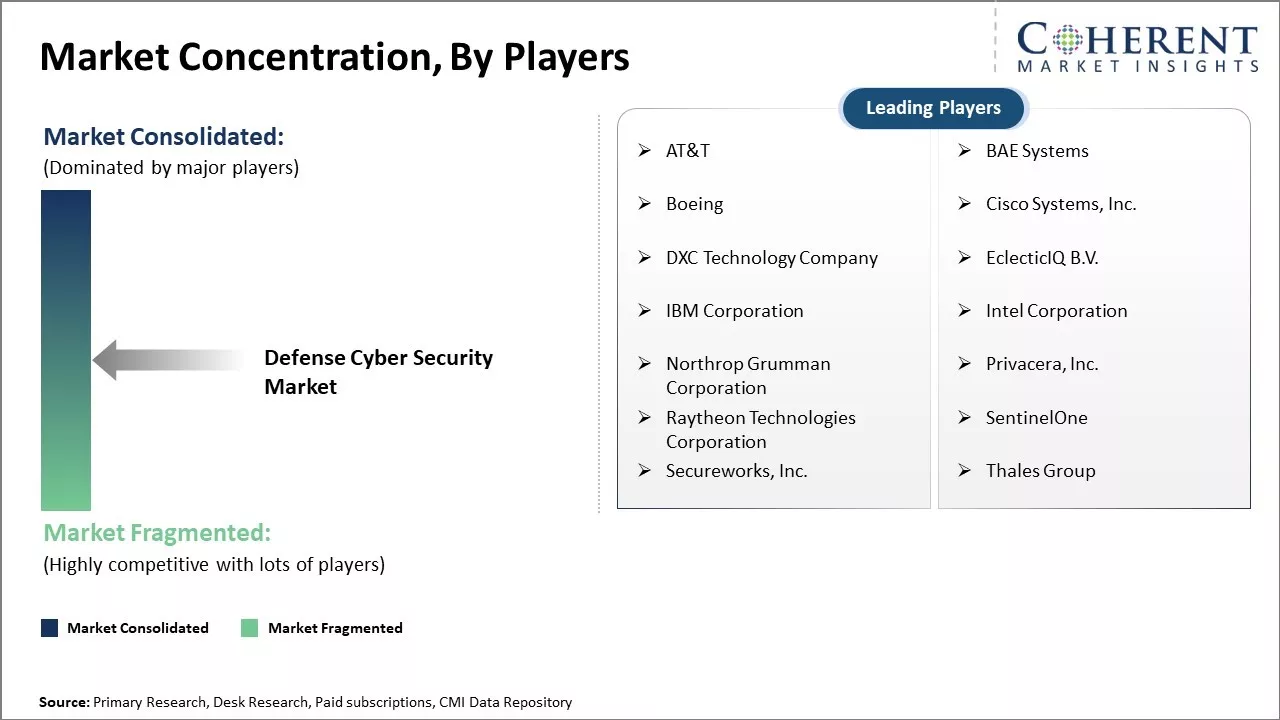
Get actionable strategies to beat competition: Download Free Sample
Operational technology convergenceThe traditional IT-OT divide in defense establishments is rapidly blurring with new operational needs. The use of commercially available technologies and integration of legacy systems with web applications has introduced new vulnerabilities. Control systems which were earlier isolated are now connected to public networks for remote monitoring and predictive maintenance. 5G networks promise to interconnect tens of billions of IP addressable devices to support mission critical applications ranging from autonomous combat vehicles to augmented reality for soldiers. This level of connectivity exposes operational assets to cyber risks beyond the protection of traditional air-gapped security architectures. Important operations such as power generation, air traffic control, and early warning radars now need strong protection against cyber threats. Demands for cross domain solutions, industrial control systems protection and security for internet of battlefield things are driving new requirements. With technology driving convergence between the physical and digital worlds, cyber security can no longer be an afterthought for defense organizations and must be embedded from initial design stages itself for various platforms and systems.
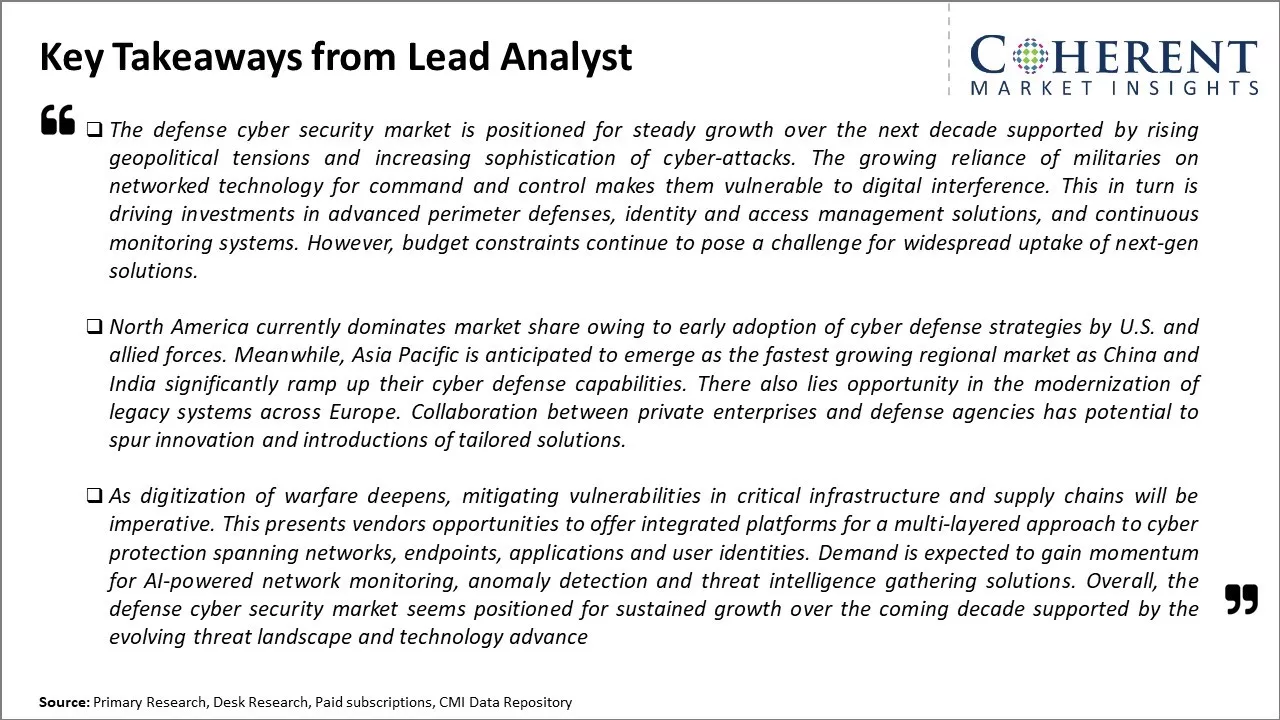
To learn more about this report, Download Free Sample
Market Challenges: The Escalating Threat of Cyber Warfare and Security ChallengesNation-state actors are developing increasingly sophisticated cyber weapons and techniques. This escalating digital arms race requires constant innovation to defend against emerging threats. Additionally, the global shortage of cyber security skills makes it difficult for organizations to hire and retain top talent. Cyber criminals are also becoming more organized, making attacks harder to predict and prevent. Defense networks manage vast amounts of sensitive data, so even minor security gaps pose serious risks. Maintaining cutting-edge protections is crucial yet an ongoing challenge.
Market Opportunities: The Rise of Cyber Warfare Technologies
As cyber warfare becomes just as important as physical warfare, there is massive investment into new defense cyber technologies. Both government and private companies are throwing billions into solutions like AI-assisted security, quantum cryptography, moving target defenses, and others. The desire to gain an advantage in this new domain will drive demand.
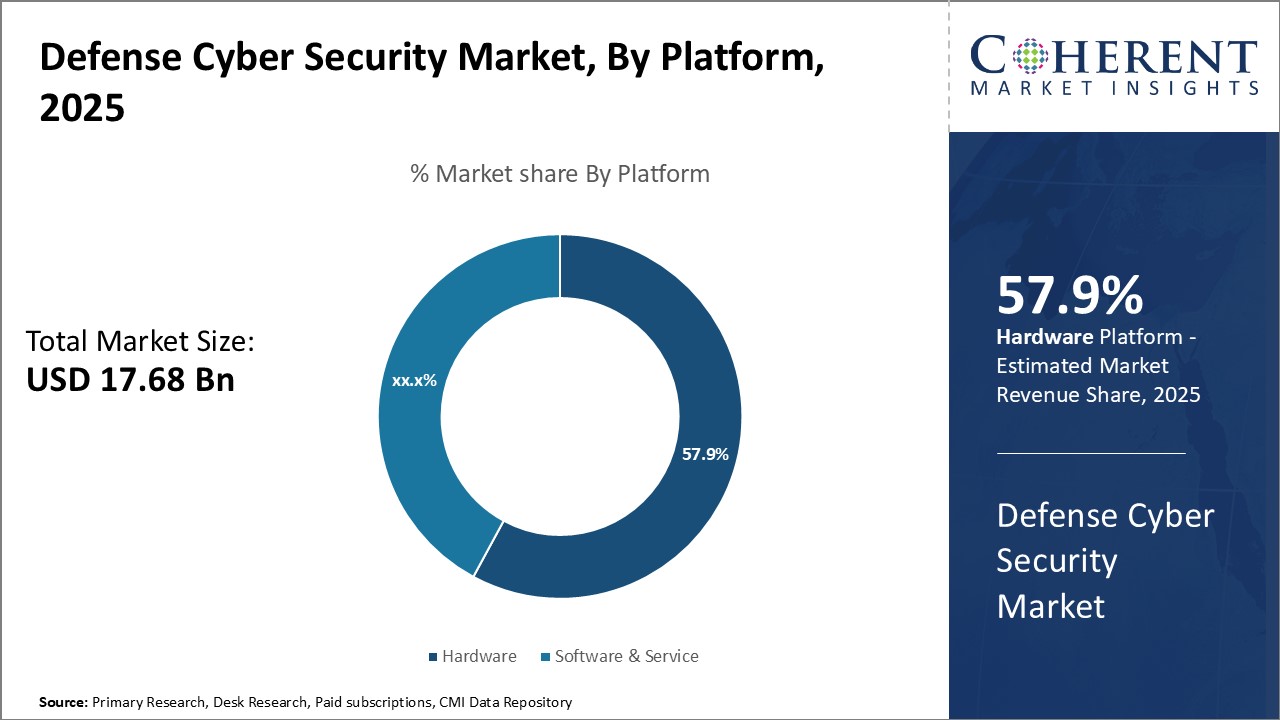
Discover high revenue pocket segments and roadmap to it: Download Free Sample
Insights By Platform- Focus on Innovation and Cybersecurity Drives Software & Services DemandIn terms of platform, the growing demand for innovative software and service solutions has driven the software & services segment to contribute the highest share of the defense cybersecurity market of 57.9% in 2025. As cyber threats continue to evolve in sophistication, software and cybersecurity services that leverage artificial intelligence, machine learning, and other advanced technologies have become indispensable for government and military organizations to gain visibility, detect threats, and respond quickly. Compared to hardware which has more limitations, software and services provide continuous innovation through regular updates and upgrades that help close security gaps. They also offer scalability to adapt to changing networking architectures and a more cost-effective operational model through subscription licenses versus large up-front hardware purchases.
Many software vendors in this space have invested heavily in R&D to create highly customized and automated platforms that integrate with existing IT systems. Their solutions deliver around-the-clock monitoring, analysis, and remediation through AI-powered next-generation tools. Leading providers are also expanding their portfolio into managed security services and consulting to offer full-spectrum defense via integrated platforms. As new domains like cloud, IoT, and 5G give rise to unpredictable vulnerabilities, customizable software that can simulate attacks and proactively fix unknown flaws have become indispensable. Their ability to scale defenses as per evolving mission needs through the cloud also gives them an edge over hardware tools with fixed capacity.
Insights By Solutions- Cyber Threat Protection Dominates on Need for Comprehensive Security
In terms of solutions, the demand for cyber threat protection solutions contributes the highest share to the defense cybersecurity market with 33.2% in 2025. With state-sponsored hacking and insider threats on the rise, securing critical defense assets, communication systems, and classified data from both known and unknown cyber attacks has become an urgent priority. Cyber threat protection solutions fulfill this need through a holistic approach -from network monitoring and endpoint protection to application security, anti-virus and anti-malware. They leverage multiple layers of techniques like machine learning, behavior analytics and attack simulation to spot even sneaky threats hiding within encrypted traffic or impersonating legitimate users.
Compared to standalone offerings focused on a single threat vector, these integrated platforms provide comprehensive visibility and control. Their centralized management allows correlating logs from disparate security controls to detect evasive, multi-stage attacks in real-time. This is invaluable for military organizations with complex IT environments spanning traditional, cloud, and tactical edge systems that are highly dynamic and distributed by nature. Furthermore, cyber threat protection vendors are continuously advancing their artificial intelligence and automation capabilities to autonomously hunt for threats, prioritize responses and streamline incident response - freeing up valuable cybersecurity resources to focus on higher-value strategic functions. Constant updates ensure their solutions address the latest TTPs employed by advanced persistent threats.
Insights By Type - Focus on Infrastructure Protection underpins Critical Infrastructure Security & Resilience Adoption
In terms of types, critical infrastructure security & resilience contributes the highest share of 40.7% in 2025 of the defense cybersecurity market given the immense sensitivity surrounding national security assets and military command systems. These systems form the backbone supporting core mission functions ranging from intelligence gathering and weaponry to logistics and personnel management. Even momentary outages or manipulation of sensors, utilities or networks controlling these hardware could severely undermine strategic capabilities or troop safety. Consequently, solutions safeguarding everything from physical access points and IoT devices to cloud environments and communication networks assume paramount importance.
Critical infrastructure security & resilience offerings distinguish themselves through their ability to holistically protect defense-related installations and networked equipment. Besides addressing top cybersecurity priorities like identity management, encryption and patch management, their comprehensive approach factors in operational resiliency. Features like disaster recovery, continuity of operations, and isolated backup systems ensure continuity of critical missions even under severe duress. Their deep insight into unique operational requirements also helps prioritize defense priorities and automate response playbooks. As physical and digital infrastructures increasingly converge, their convergent capabilities securing people, systems and locations will remain irreplaceable for maintaining military advantage and readiness.
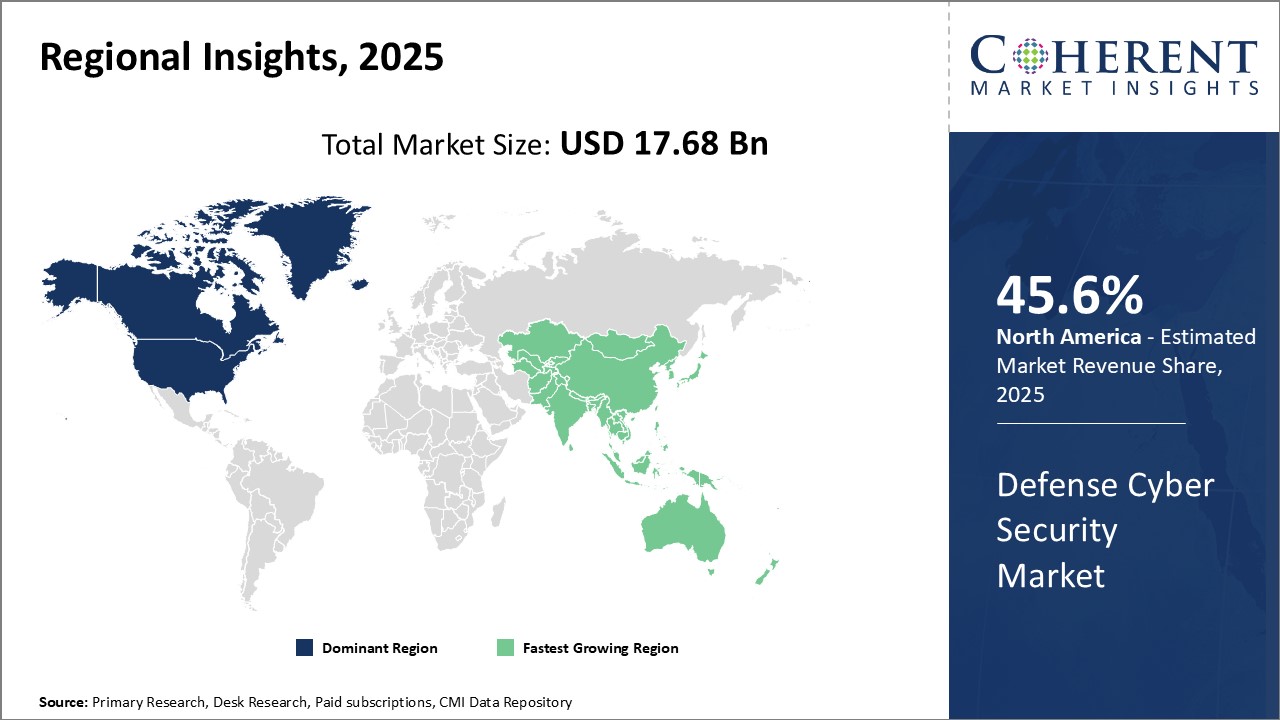
Need a Different Region or Segment? Download Free Sample
North America has dominated the defense cyber security market with 45.6% in 2025 due to significant investments and expertise in the domain by key players in the region. The U.S. is at the forefront of cyber threats globally and has consistently ramped up budget allocation for both offensive and defensive cyber capabilities. Major U.S. defense contractors have established dedicated cyber divisions to cater to the sophisticated needs of North American defense organizations, giving the region a clear advantage in terms of developed solutions. Moreover, the presence of cutting-edge research universities and national laboratories help North America maintain an edge in terms of innovation.
A key factor for the region's leadership has been the strong demand from defense, intelligence, and homeland security agencies. These organizations recognize cyber threats to critical infrastructure and national security systems at the highest level and leave no stone unturned to continually strengthen protection measures. Extensive collaboration between the public and private sectors have also propelled North America to become the world's hub for advanced cyber R&D. The thriving ecosystem of startups further reinforces the region's dominance.
The Asia Pacific has emerged as the fastest growing regional market for defense cyber security. Rapid digital transformation of defense forces across the region has increased the attack surface manifold. At the same time, rising geopolitical tensions and the involvement of state actors have amplified cyber threats. Unlike North America, the Asia Pacific region lacks indigenous expertise to fully satisfy this growing demand and remains heavily import-dependent. This dependence provides international players an opportunity to transfer technology and set up local manufacturing units in order to gain a foothold. Nations such as India, Australia, and South Korea have formulated focused initiatives and allocated separate funds to bolster their cyber capabilities through partnerships with global firms. This has driven the exceptional growth being witnessed in the Asia Pacific region defense cyber security market.
Defense Cyber Security Market Report Coverage
| Report Coverage | Details | ||
|---|---|---|---|
| Base Year: | 2024 | Market Size in 2025: | USD 17.68 Bn |
| Historical Data for: | 2020 To 2024 | Forecast Period: | 2025 To 2032 |
| Forecast Period 2025 to 2032 CAGR: | 14.9% | 2032 Value Projection: | USD 46.78 Bn |
| Geographies covered: |
|
||
| Segments covered: |
|
||
| Companies covered: |
AT&T, BAE Systems, Boeing, Cisco Systems, Inc., DXC Technology Company, EclecticIQ B.V., IBM Corporation, Intel Corporation, Northrop Grumman Corporation, Privacera, Inc., Raytheon Technologies Corporation, SentinelOne, Secureworks, Inc., and Thales Group |
||
| Growth Drivers: |
|
||
| Restraints & Challenges: |
|
||
Uncover macros and micros vetted on 75+ parameters: Get instant access to report
*Definition: The defense cyber security market consists of companies that provide cybersecurity solutions and services targeted towards defense agencies and militaries. These include technologies, products, and consulting services focused on securing defense networks, systems, assets, and infrastructure from various cyber threats like hacking, phishing, malware, and cyber espionage. Some of the key solutions offered are network security, cloud security, Internet of Things (IoT) security, identity, and access management, data loss prevention, and security information and event management.
Share
Share
About Author
Suraj Bhanudas Jagtap is a seasoned Senior Management Consultant with over 7 years of experience. He has served Fortune 500 companies and startups, helping clients with cross broader expansion and market entry access strategies. He has played significant role in offering strategic viewpoints and actionable insights for various client’s projects including demand analysis, and competitive analysis, identifying right channel partner among others.
Missing comfort of reading report in your local language? Find your preferred language :
Transform your Strategy with Exclusive Trending Reports :
Frequently Asked Questions
Joining thousands of companies around the world committed to making the Excellent Business Solutions.
View All Our Clients